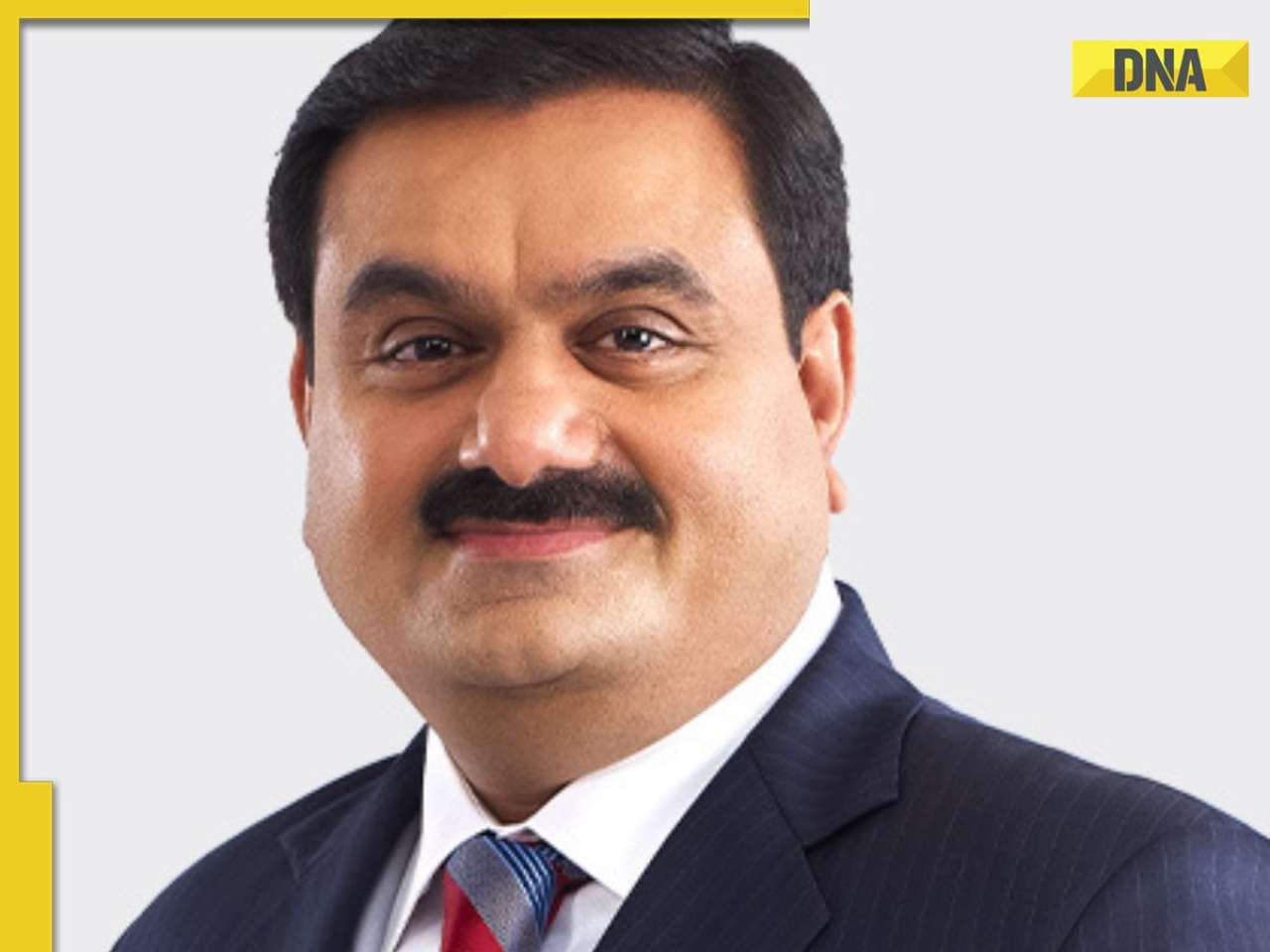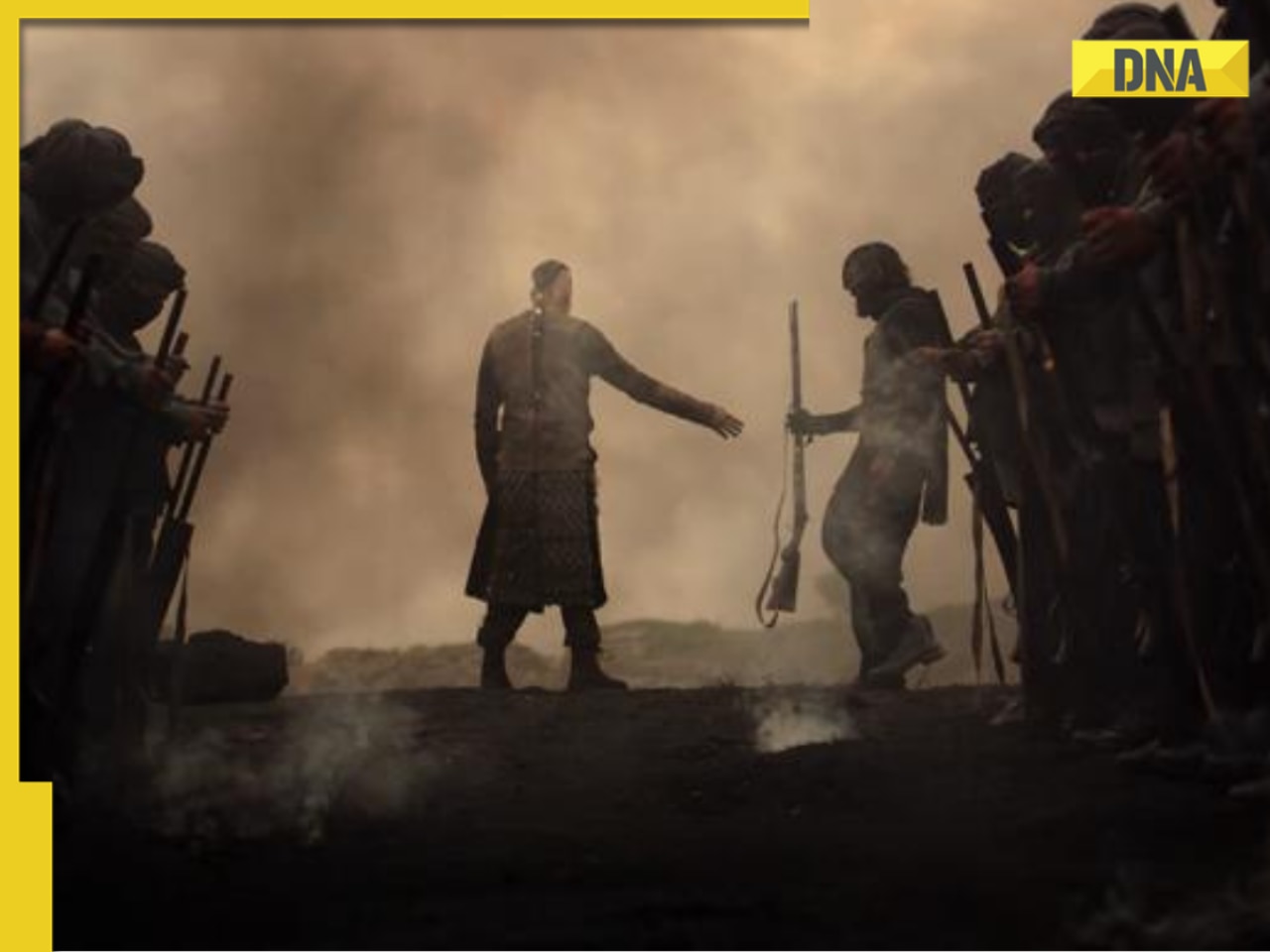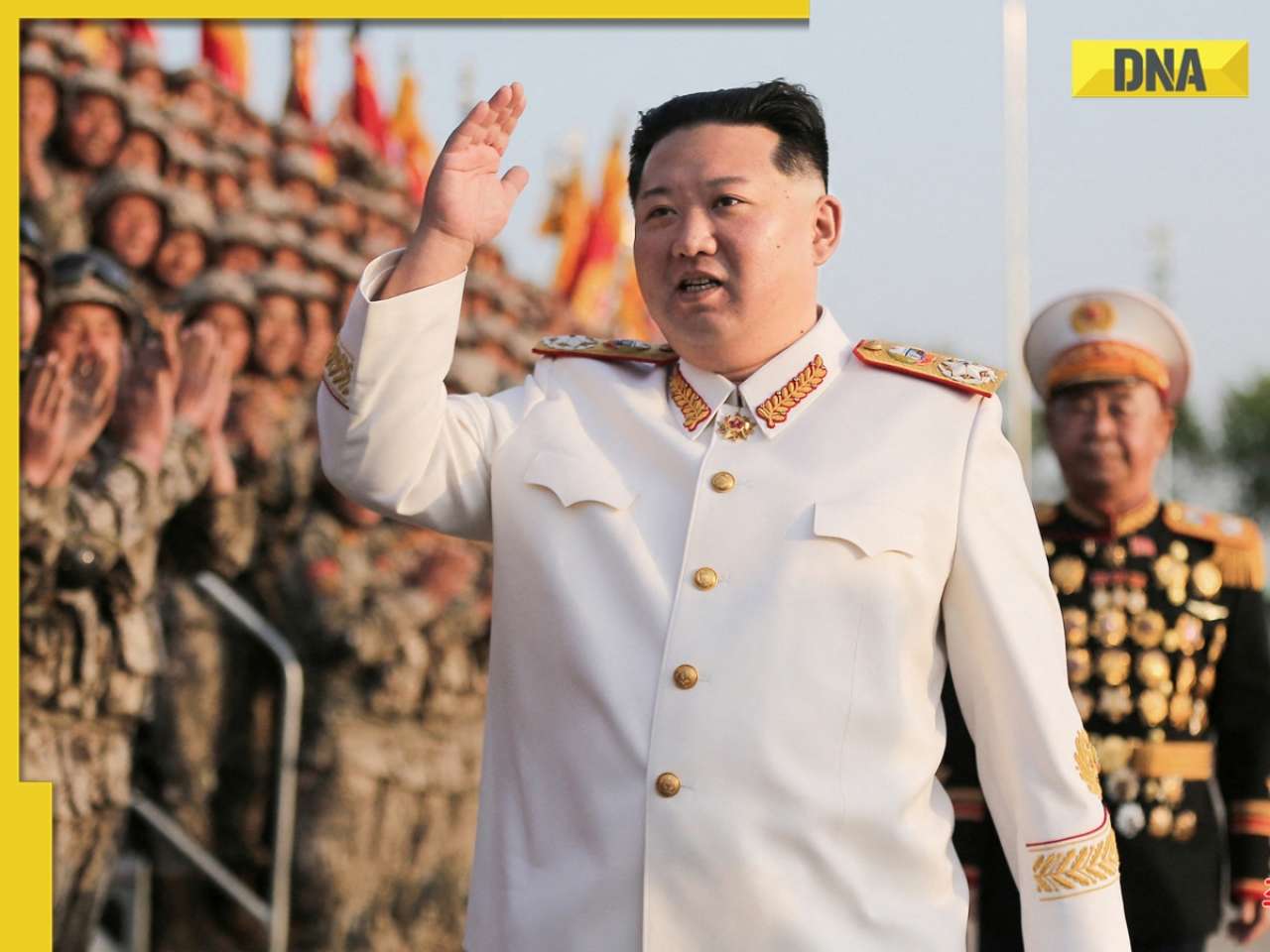Even as cops and journalists inundate Ayodhya ahead of the September 24 judgment, the residents are determined not to fall for the communal bait this time round.
Some time last year, Azadar Hussain, the caretaker of the ‘imambara’ (mausoleum) in Syed Bara locality of Ayodhya, had locked his house as he left town with his family. While he was away, a fire broke out in his house. His neighbour, Gyandas, broke in and saved it from being gutted.
Many may consider that an insignificant anecdote. But it speaks volumes about the secular mood of this holy city. For, secularism is not a seminar title here. It’s a way of life.
“I have been fighting this (Ram Janmabhoomi-Babri Masjid title) case since 1949, but no Hindu has ever abused me or thrown a stone at me,” says Hashim Ansari (90), the oldest surviving party in the legal dispute. No wonder even the Hindu youth gathered around call him chacha (uncle).
It’s ironical and interesting, too, to notice the frowns that materialise on the faces of Ayodhya residents if you try rubbing in the secular bit too much. In their own words and in different polite ways, they will tell you: “Please don’t give us credit for that. We are like that only.”
But there is one thing they detest. And that’s “outsiders”, the source of all their trouble since that night of December 22-23, 1949 when some miscreants placed Lord Ram’s idols inside the disputed shrine. But whether they like it or not, Ayodhya has been receiving more outsiders of late — mostly journalists and men in uniform.
Ayodhya is a small and otherwise sleepy town of about 50,000 people. It’s in the process of getting about 10,000 security men. The PAC (provincial armed constabulary) trucks are a familiar sight as one drives from Faizabad, the district headquarter, towards the temple town about 7km away. Central Reserve Police Force (CRPF) trucks are becoming a part of the disconcerting scenery.
Not that Ayodhya’s citizens are unfamiliar or scared of men in riot gear. It just makes them uncomfortable. Why? I pop the question to young Rashid, sipping tea at a roadside kiosk. “It brings back bad memories,” he says.
As if on cue, I am reminded of my visit to Ayodhya barely a month after the December 1992 demolition. It was my maiden TV assignment for Vinod Dua’s TV programme Parakh. I still remember how scared and still Ayodhya was. The carefree lifestyle was gone. People were in fear. There was no idle chatter at roadside ‘chai’ shops. Mahants of many temples had fled and devotees missed the daily ‘aartis’ that used to be an unbreakable routine at dawn and dusk. The gloom in those twilight hours hung heavy.
After the 26/11 attack in Mumbai, the media hyped the spirit of India’s commercial capital, and sang paeans to how it sprung back to life. But in hindsight, I can compare and say Ayodhya had none of it, not even a painful and grieving month after the demolition. The spirit had died and everyone was scared, whether they admitted it or not.
This time, however, is a pleasant surprise. Despite the overlying tension, the average Ayodhya-ite somehow seems secure in the knowledge that this too will pass, and pass off peacefully.
Mahant Satyendra Das’s voice rings with conviction as he says:
“This dispute would have been solved long back had it been left to the Hindus and Muslims of Ayodhya.” He should know. He lives at Ground Zero, being the chief priest of the ‘Ram Janmabhoomi’ temple. “You just wait and see, nothing will go wrong (after the Sep 24 verdict)… Ram Lala will take care of everything,” he says. The reassurance sounds familiar.
Anyone needing more cause for comfort should go to Madarsa Ibrahimiya in Adgada, right in the heart of Ayodhya. The ‘madarsa’ has about 100 students, including some Hindus. The in-charge, Mohammad Ishaq, says none of them are missing classes despite rumours that curfew has been imposed in Ayodhya and Faizabad. Elsewhere, students attend schools unmindful of the tents being erected on their playgrounds to house the security forces flooding the town.
“The prayers in the temples and mosques are on as usual… we don’t feel anything drastic is going to happen here,” asserts Mithilesh Pandey, chairman of the Ayodhya Municipal Council. She points out that one of Ayodhya’s 20-odd wards is represented by a Muslim. That may not stand for much except that corporator Asad Ahmed’s ward (Tedhi Bazar) has a sizeable Hindu population.
Old timers do not fail to remind you how pointless it is looking for signs of secularism in a place where Hindus and Muslims offered prayers at the same spot for more than 300 years after Mughal emperor Babar’s lieutenant Mir Baqi built the Babri mosque in Ayodhya in 1528. The dispute arose only after the Nirmohi Akhada claimed in 1885 that it was built at the ‘Ram Janmabhoomi’ (the birthplace of Lord Ram).
For the residents of Ayodhya, history hasn’t changed much. Even though the heavy staccato of the CRPF jawans’ boots is a grim reminder that today the shrine is neither a ‘Ram Janmabhoomi Mandir’ nor a ‘Babri mosque’ but a ‘disputed site’ — as legalese would have it — 482 years of distorted history (since 1528), 125 years of conflicting claims (since 1885), and six decades of legal battle (since the first title suit was filed in 1950) have failed to dampen the spirit and soul of Ayodhya.
Perhaps, that is what most of us recognise as secularism.
![submenu-img]() Mukesh Ambani’s daughter Isha Ambani’s firm launches new brand, Reliance’s Rs 8200000000000 company to…
Mukesh Ambani’s daughter Isha Ambani’s firm launches new brand, Reliance’s Rs 8200000000000 company to…![submenu-img]() Sonali Bendre says producers called her 'too thin', tried to ‘fatten her up' during the 90s: ‘They'd just tell me...'
Sonali Bendre says producers called her 'too thin', tried to ‘fatten her up' during the 90s: ‘They'd just tell me...'![submenu-img]() Heavy rains in UAE again: Dubai flights cancelled, schools and offices shut
Heavy rains in UAE again: Dubai flights cancelled, schools and offices shut![submenu-img]() When 3 Bollywood films with same story released together, two even had same hero, all were hits, one launched star kid
When 3 Bollywood films with same story released together, two even had same hero, all were hits, one launched star kid![submenu-img]() Gautam Adani’s firm gets Rs 33350000000 from five banks, to use money for…
Gautam Adani’s firm gets Rs 33350000000 from five banks, to use money for…![submenu-img]() DNA Verified: Is CAA an anti-Muslim law? Centre terms news report as 'misleading'
DNA Verified: Is CAA an anti-Muslim law? Centre terms news report as 'misleading'![submenu-img]() DNA Verified: Lok Sabha Elections 2024 to be held on April 19? Know truth behind viral message
DNA Verified: Lok Sabha Elections 2024 to be held on April 19? Know truth behind viral message![submenu-img]() DNA Verified: Modi govt giving students free laptops under 'One Student One Laptop' scheme? Know truth here
DNA Verified: Modi govt giving students free laptops under 'One Student One Laptop' scheme? Know truth here![submenu-img]() DNA Verified: Shah Rukh Khan denies reports of his role in release of India's naval officers from Qatar
DNA Verified: Shah Rukh Khan denies reports of his role in release of India's naval officers from Qatar![submenu-img]() DNA Verified: Is govt providing Rs 1.6 lakh benefit to girls under PM Ladli Laxmi Yojana? Know truth
DNA Verified: Is govt providing Rs 1.6 lakh benefit to girls under PM Ladli Laxmi Yojana? Know truth![submenu-img]() Remember Ayesha Kapur? Michelle from Black, here's how actress, nutrition coach, entrepreneur looks after 19 years
Remember Ayesha Kapur? Michelle from Black, here's how actress, nutrition coach, entrepreneur looks after 19 years![submenu-img]() Remember Heyy Babyy's cute 'Angel' Juanna Sanghvi? 20 year-old looks unrecognisable now, fans say 'her comeback will...'
Remember Heyy Babyy's cute 'Angel' Juanna Sanghvi? 20 year-old looks unrecognisable now, fans say 'her comeback will...'![submenu-img]() In pics: Arti Singh stuns in red lehenga as she ties the knot with beau Dipak Chauhan in dreamy wedding
In pics: Arti Singh stuns in red lehenga as she ties the knot with beau Dipak Chauhan in dreamy wedding![submenu-img]() Actors who died due to cosmetic surgeries
Actors who died due to cosmetic surgeries![submenu-img]() See inside pics: Malayalam star Aparna Das' dreamy wedding with Manjummel Boys actor Deepak Parambol
See inside pics: Malayalam star Aparna Das' dreamy wedding with Manjummel Boys actor Deepak Parambol ![submenu-img]() DNA Explainer: Why Harvey Weinstein's rape conviction was overturned, will beleaguered Hollywood mogul get out of jail?
DNA Explainer: Why Harvey Weinstein's rape conviction was overturned, will beleaguered Hollywood mogul get out of jail?![submenu-img]() What is inheritance tax?
What is inheritance tax?![submenu-img]() DNA Explainer: What is cloud seeding which is blamed for wreaking havoc in Dubai?
DNA Explainer: What is cloud seeding which is blamed for wreaking havoc in Dubai?![submenu-img]() DNA Explainer: What is Israel's Arrow-3 defence system used to intercept Iran's missile attack?
DNA Explainer: What is Israel's Arrow-3 defence system used to intercept Iran's missile attack?![submenu-img]() DNA Explainer: How Iranian projectiles failed to breach iron-clad Israeli air defence
DNA Explainer: How Iranian projectiles failed to breach iron-clad Israeli air defence![submenu-img]() Sonali Bendre says producers called her 'too thin', tried to ‘fatten her up' during the 90s: ‘They'd just tell me...'
Sonali Bendre says producers called her 'too thin', tried to ‘fatten her up' during the 90s: ‘They'd just tell me...'![submenu-img]() When 3 Bollywood films with same story released together, two even had same hero, all were hits, one launched star kid
When 3 Bollywood films with same story released together, two even had same hero, all were hits, one launched star kid![submenu-img]() Salman Khan house firing case: Family of deceased accused claims police 'murdered' him, says ‘He was not the kind…’
Salman Khan house firing case: Family of deceased accused claims police 'murdered' him, says ‘He was not the kind…’![submenu-img]() Meet actor banned by entire Bollywood, was sent to jail for years, fought cancer, earned Rs 3000 crore on comeback
Meet actor banned by entire Bollywood, was sent to jail for years, fought cancer, earned Rs 3000 crore on comeback ![submenu-img]() Karan Johar wants to ‘disinherit’ son Yash after his ‘you don’t deserve anything’ remark: ‘Roohi will…’
Karan Johar wants to ‘disinherit’ son Yash after his ‘you don’t deserve anything’ remark: ‘Roohi will…’![submenu-img]() IPL 2024: Bhuvneshwar Kumar's last ball wicket power SRH to 1-run win against RR
IPL 2024: Bhuvneshwar Kumar's last ball wicket power SRH to 1-run win against RR![submenu-img]() BCCI reacts to Rinku Singh’s exclusion from India T20 World Cup 2024 squad, says ��‘he has done…’
BCCI reacts to Rinku Singh’s exclusion from India T20 World Cup 2024 squad, says ��‘he has done…’![submenu-img]() MI vs KKR, IPL 2024: Predicted playing XI, live streaming details, weather and pitch report
MI vs KKR, IPL 2024: Predicted playing XI, live streaming details, weather and pitch report![submenu-img]() IPL 2024: How can RCB and MI still qualify for playoffs?
IPL 2024: How can RCB and MI still qualify for playoffs?![submenu-img]() MI vs KKR IPL 2024 Dream11 prediction: Fantasy cricket tips for Mumbai Indians vs Kolkata Knight Riders
MI vs KKR IPL 2024 Dream11 prediction: Fantasy cricket tips for Mumbai Indians vs Kolkata Knight Riders ![submenu-img]() '25 virgin girls' are part of Kim Jong un's 'pleasure squad', some for sex, some for dancing, some for...
'25 virgin girls' are part of Kim Jong un's 'pleasure squad', some for sex, some for dancing, some for...![submenu-img]() Man dances with horse carrying groom in viral video, internet loves it
Man dances with horse carrying groom in viral video, internet loves it ![submenu-img]() Viral video: 78-year-old man's heartwarming surprise for wife sparks tears of joy
Viral video: 78-year-old man's heartwarming surprise for wife sparks tears of joy![submenu-img]() Man offers water to thirsty camel in scorching desert, viral video wins hearts
Man offers water to thirsty camel in scorching desert, viral video wins hearts![submenu-img]() Pakistani groom gifts framed picture of former PM Imran Khan to bride, her reaction is now a viral video
Pakistani groom gifts framed picture of former PM Imran Khan to bride, her reaction is now a viral video

















































)
)
)
)
)
)